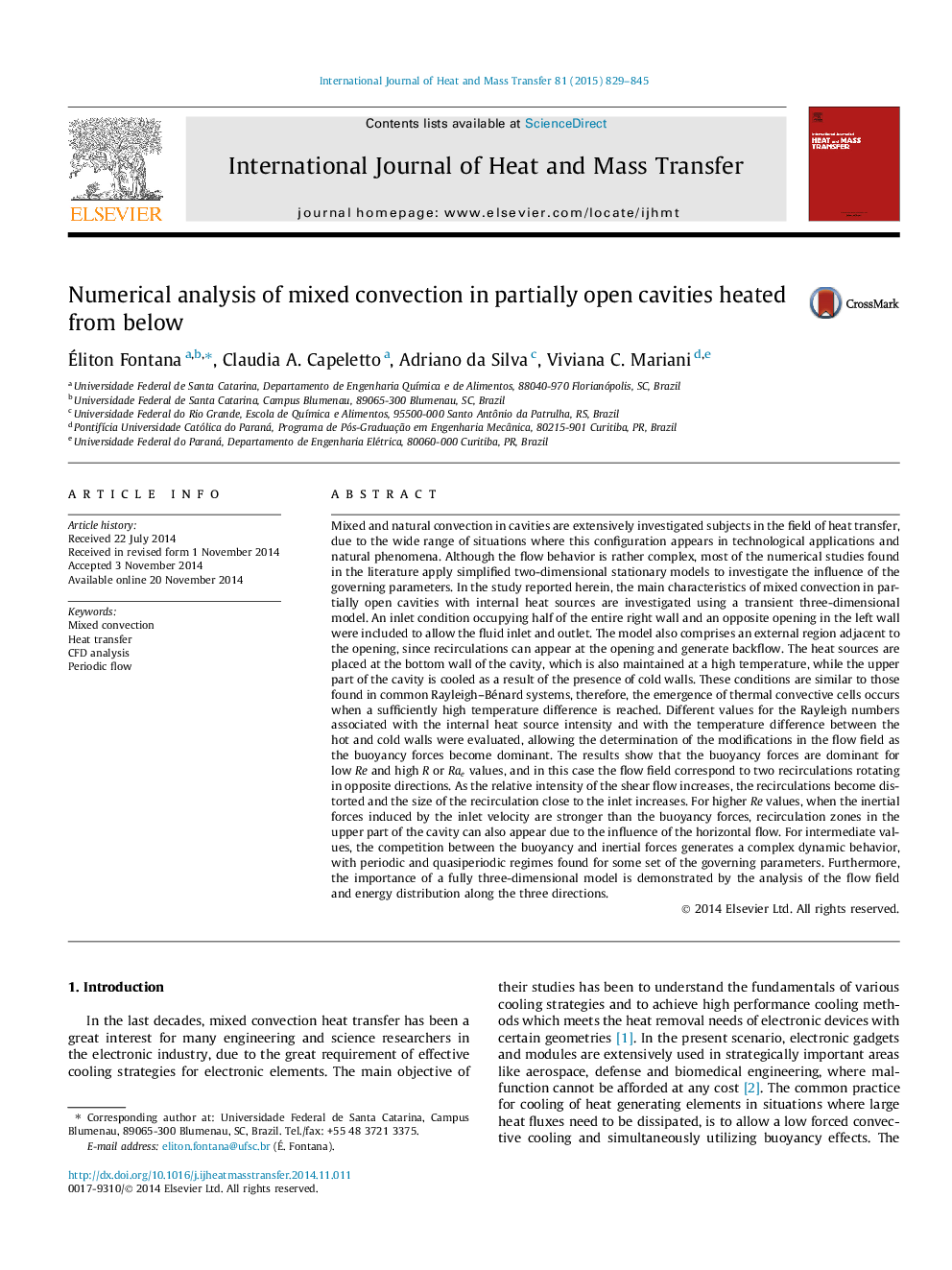| Article ID | Journal | Published Year | Pages | File Type |
|---|---|---|---|---|
| 656885 | International Journal of Heat and Mass Transfer | 2015 | 17 Pages |
Mixed and natural convection in cavities are extensively investigated subjects in the field of heat transfer, due to the wide range of situations where this configuration appears in technological applications and natural phenomena. Although the flow behavior is rather complex, most of the numerical studies found in the literature apply simplified two-dimensional stationary models to investigate the influence of the governing parameters. In the study reported herein, the main characteristics of mixed convection in partially open cavities with internal heat sources are investigated using a transient three-dimensional model. An inlet condition occupying half of the entire right wall and an opposite opening in the left wall were included to allow the fluid inlet and outlet. The model also comprises an external region adjacent to the opening, since recirculations can appear at the opening and generate backflow. The heat sources are placed at the bottom wall of the cavity, which is also maintained at a high temperature, while the upper part of the cavity is cooled as a result of the presence of cold walls. These conditions are similar to those found in common Rayleigh–Bénard systems, therefore, the emergence of thermal convective cells occurs when a sufficiently high temperature difference is reached. Different values for the Rayleigh numbers associated with the internal heat source intensity and with the temperature difference between the hot and cold walls were evaluated, allowing the determination of the modifications in the flow field as the buoyancy forces become dominant. The results show that the buoyancy forces are dominant for low Re and high R or RaeRae values, and in this case the flow field correspond to two recirculations rotating in opposite directions. As the relative intensity of the shear flow increases, the recirculations become distorted and the size of the recirculation close to the inlet increases. For higher Re values, when the inertial forces induced by the inlet velocity are stronger than the buoyancy forces, recirculation zones in the upper part of the cavity can also appear due to the influence of the horizontal flow. For intermediate values, the competition between the buoyancy and inertial forces generates a complex dynamic behavior, with periodic and quasiperiodic regimes found for some set of the governing parameters. Furthermore, the importance of a fully three-dimensional model is demonstrated by the analysis of the flow field and energy distribution along the three directions.
